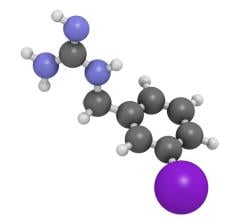In radiation therapy, the use of rotational beam delivery provides greater flexibility in shaping radiation dose distributions. When rotational delivery is combined with intensity modulated radiation therapy (IMRT), highly conformal dose distributions can be achieved with a rapid falloff in radiation damage outside of the target.
Tomotherapy is an arced approach to the delivery of IMRT that is characterized by the use of a binary multileaf collimator and the delivery of a fan beam of radiation. The HiArt and TomoHD systems from TomoTherapy Inc. [Editor’s note: TomoTherapy was recently acquired by Accuray] are designed to deliver helical tomotherapy, a delivery technique where the linear accelerator is mounted on a ring-shaped gantry that progresses around the patient during the treatment. The patient is slowly advanced through the rotating fan beam of radiation, leading to a helical beam delivery.
Volumetric modulated arc therapy (VMAT) is an approach to rotational IMRT that can be delivered on a conventional linear accelerator. VMAT combines the dosimetric advantages of rotational IMRT with a highly efficient delivery technique. Even complex IMRT plans can be delivered in a single arc with a delivery time under two minutes.
In 2008, both Varian and Elekta introduced linear accelerator control systems capable of delivering VMAT. The new control software made it possible to simultaneously vary the multileaf collimator leaf positions, gantry rotation speed and dose rate during rotational beam delivery.
The ability to deliver VMAT plans, however, only solved half of the problem. The other challenge was the development of robust planning tools for VMAT.
During the delivery of a VMAT arc, the positions of the multileaf collimator leaves are constantly changing. Constraints must be imposed to limit the degree of leaf motion from one beam angle to the next. This is necessary to ensure deliveries that are both accurate and efficient. These leaf motion constraints are not easily incorporated into most optimization algorithms. Consequently, many vendors have had to significantly rework their optimization tools to be able to support VMAT treatment planning.
The most widely implemented VMAT planning and delivery solution is Varian RapidArc. RapidArc planning capabilities are available in Varian’s Eclipse treatment planning solution. Eclipse uses direct aperture optimization (DAO) to create the optimized aperture shapes and weights.
Another widely used VMAT planning solution is the SmartArc module in Philips Medical’s Pinnacle3 treatment planning system. The SmartArc module was developed by RaySearch Laboratories and relies on an aperture-based planning algorithm. SmartArc is designed to perform VMAT planning for both Varian and Elekta linacs.
One innovative feature with the SmartArc solution is the ability to deliver constant dose rate (CDR) VMAT. With CDR VMAT, the dose rate remains constant throughout each arc while the MLC leaves move dynamically to achieve intensity modulation. CDR VMAT plans can be delivered on many Varian linacs without the need to perform a RapidArc upgrade. The disadvantage of CDR VMAT is that it removes a critical degree of freedom for the VMAT optimization. Therefore, it may not be an ideal technique for the most complex IMRT cases.
The Nucletron Oncentra VMAT treatment planning solution was also developed by RaySearch Labs and consequently shares many similarities to the VMAT tools in Pinnacle. Similar tools are also available in RaySearch’s own treatment planning system, called RayStation.
Elekta now offers VMAT planning in its Monaco treatment planning solution. Monaco employs an arc sequencing algorithm rather than using an aperture-based optimization. With an arc sequencer, VMAT plans are produced using a two-step process. First, an optimized fixed-field IMRT plan is developed. A sequencing algorithm is then applied that converts the fixed-field IMRT plan into one that can be delivered using VMAT.
The most robust VMAT planning solutions provide the ability to plan single-arc and multi-arc deliveries, non-coplanar arcs and constant dose rate VMAT. The quality of VMAT planning and delivery are continuing to improve, and more and more clinics are taking advantage of this treatment technique.


 December 11, 2025
December 11, 2025 









